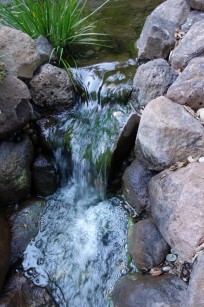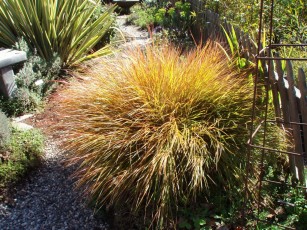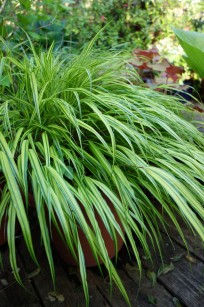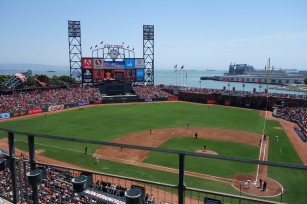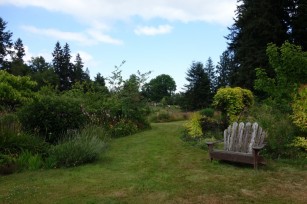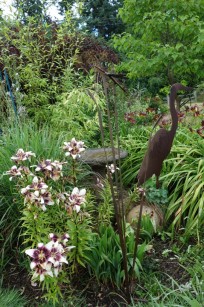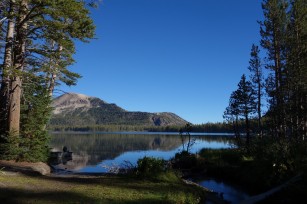 Maybe we can't improve on Mother Nature but can we learn from her to make our own gardens more beautiful. My late summer travels this year took me to Lake Mary in the Mammoth Lakes area where I began to get ideas. This small Sierra lake formed in a depression in the glacial moraine below majestic Crystal Crag. Dozens of small streams keep the meadows blooming with wildflowers even in August. Granite slabs and obsidian domes the size of small states create an impressive landscape. Everywhere I looked I saw how the plants, stone and water came together to make a combination that would look incredible in a regular garden.
Maybe we can't improve on Mother Nature but can we learn from her to make our own gardens more beautiful. My late summer travels this year took me to Lake Mary in the Mammoth Lakes area where I began to get ideas. This small Sierra lake formed in a depression in the glacial moraine below majestic Crystal Crag. Dozens of small streams keep the meadows blooming with wildflowers even in August. Granite slabs and obsidian domes the size of small states create an impressive landscape. Everywhere I looked I saw how the plants, stone and water came together to make a combination that would look incredible in a regular garden.
Horseshoe Lake nearby was particularly fascinating for another reason. Back in 1990 the pines near the lake began to die off. Drought and insect infestation were first suspected but were found not to be the cause. It wasn't until 1994 that a soil survey revealed an exceptionally high concentration of carbon dioxide. The trees were being killed by CO2 in their root zone.
What caused such high concentrations of this gas? A swarm of earthquakes in 1989 allowed magma to push up from deep within the earth into tiny cracks causing limestone-rich rocks beneath Mammoth Mountain to be heated and release carbon dioxide gas. We also live in earthquake country. Thankfully this has never happened around here.
The art of bonsai involves creating nature in miniature. The Eastern Sierra does it on an immense scale. The boulders are huge beside the trail, the conifers towering above you as you hike. You can take this same look and scale it down to garden-size.
Evergreen conifers are often overlooked as additions to the landscape. If a white fir or bristlecone pine won't fit into your backyard there are many smaller types that provide year round structure. Maybe a 4 foot golden Feelin' Sunny deodar cedar would look spectacular in a small border, rock garden or container. Or how about a dwarf Wilma Goldcrest Monterey cypress against a backdrop of trees or shrubs with red or purple foliage? Don't overlook these elegant workhorses in the garden.
Pink Sierra Currants, adorned with shiny, translucent fruits were ripe for the picking as I walked along the trail on the way to Box Lake in the Rock Creek area. This currant is similar to our familiar red-flowering currant but is a smaller bush. I found it growing in moist areas as well as dry spots and would do well in any garden.
Blue Sierra lupine, Crimson columbine, blue Sierra Fringed gentian, pyrola or pink wintergreen and spice bush or calycanthus occidentals are just a few of the wildflowers still blooming in profusion. Given similar conditions all these beautiful flowers will grow in your garden. Tucked next to an accent rock you can have the Sierras right out your own window.
The diversity of plants on the eastern side of the Sierra is made possible by three vegetative communities: the Sierra Nevada range, the Great Basin and the North Mojave Desert. Our own area is rich also in plant species. Our cool moist coastal conditions and warm dry chaparral allow us to grow an amazing number of different kinds of plants. Enjoy all that your garden can be.

